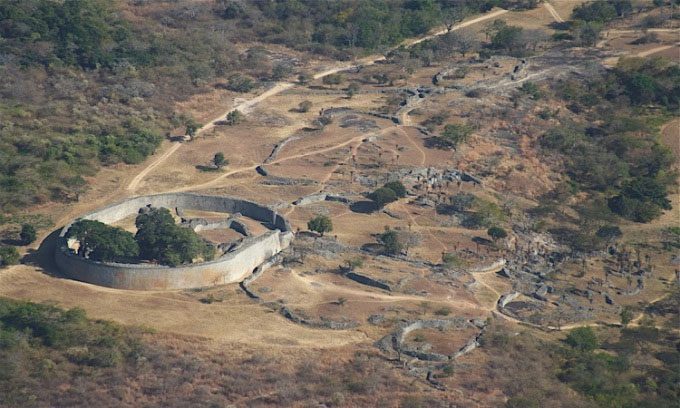Great Zimbabwe is a medieval supercity of Africa, featuring a network of water catchment pits that ensured water supply for its inhabitants throughout the seasons.

Ruins of Great Zimbabwe viewed from above. (Photo: Janice Bell).
Great Zimbabwe was the first major city in Southern Africa, home to approximately 18,000 people during its peak. Researchers are still unclear about the reasons for the decline of this medieval supercity, but a team of archaeologists has discovered evidence of a water storage system that helped the city survive droughts, as reported by Science Alert on January 30.
Experts from Denmark, South Africa, England, and Zimbabwe believe that a series of large circular depressions known as dhaka pits found around the city were not used for clay extraction but for water collection. For instance, many dhaka pits located at the foothills could collect rainwater and groundwater. Others are situated around streams flowing through the city.
According to the research team, by gathering rainwater and constructing barriers in certain river sections, the residents of the city could ensure a consistent supply of drinking water and agricultural irrigation for most of the year, even during the dry season. For example, many plants near the dhaka pits thrived on the river or groundwater, maintaining high soil moisture levels.
The scientists made new discoveries regarding the role of dhaka pits in Great Zimbabwe using aerial laser scanning methods to survey the site’s features, even in densely vegetated areas. They also utilized ground survey results and engaged with the local community. Calculating the total amount of water that all the dhaka pits around the city could hold proved challenging, especially as this was the first study to examine this structure. However, estimates suggest that the dhaka pits could store over 18 million liters of water. The research team published their findings in the journal Anthropocene.
During the height of Great Zimbabwe from the mid-11th century to the 15th century, the city was home to the ruling elite, religious leaders, craftsmen, and traders. Today, the history of Great Zimbabwe remains a significant mystery. It is possible that the city collapsed due to climate change, even with such a sophisticated water management system.


















































